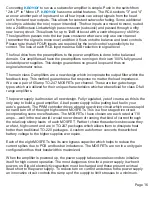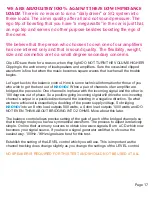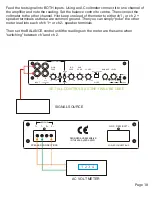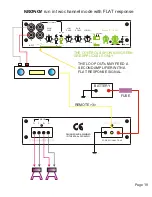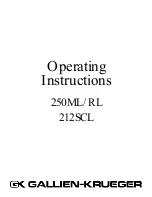
Our design philosophies have been influenced by both the professional and home audio
markets. Traditionally the professional market has been driven by reliability with sound
quality as second. The home market was the reverse. Today however both reliability and
sound quality carry equal weight in both sectors. Cosmetics for obvious reasons are
important in any sector. My experience in designing and building professional amplifiers
has helped me in taking a similar approach in the design of mobile audio amplifiers. No
matter how pretty or good sounding an amplifier may be, if it fails then it is a bad amplifier.
The lesson learned many years ago was “silicon”, and use lots of it. All things being
equal, if an amplifier drive circuit is stable, then adding an output stage (itself stable as
well) with enough power devices will make the amplifier reliable. This assumes of course
that mechanical issues are taken care of. Zed has always been a proponent of using a
generous amount of power transistors in the output stages of our amplifiers. In addition
we design at temperatures of 80 degrees Celsius. All semiconductors must be derated at
these elevated temperatures and we use enough power devices for safe operation into
the lowest load impedance the particular amplifier has been designed to drive.
Our personal opinion about “fancy” cables and exotic passive components may shock
some of you. I have never been able to hear the difference between a cheap or an
expensive RCA patch cord. My listening has been done using double blind A-B
comparisons. Electrons are not very clever things and they have no knowledge of the type
of material through which they are flowing at the speed of light (312,000 Km/second). The
ONLY reason we recommend high quality double shielded RCA patch cords in mobile
installations is to reject noise. My opinion about speaker cables is the same. As long as
the wire is thick enough, it’s construction makes no difference. As long as the amplifier is
stable into reactive loads with phase angles of up to 60 degrees, the amplifier is none the
wiser what type of speaker cable is used.
The use of teflon, polypropylene, tantalum or other capacitors does not make a good
sounding amplifier. There are too many other variables in the audio chain that one
capacitor can make a difference. The use of metal film resistors is only of use in low noise
circuits and where tolerance is of an issue. Never forget what the music signal had to go
through to get onto your CD or vinyl. The signal began as a micro volt specimen at the
microphone, sent through a high gain pre-amplifier, passed through equalization circuits,
possible compressors, limiters or other processing gear and then mixed with all the other
tracks. In analog days and today still, this signal was sent to a 24 track tape recorder
again through a multitude of transformers, pre-amplifiers, equalizers and yikes the tape
heads themselves. Then the signals were passed back through the tape deck’s playback
circuits including the equalizer for playback, then back into the mixing console for mix-
down to two track and then this was repeated again onto a two track tape recorder, then
sent to the cutting head amplifier where the masters were then cut. A torturous journey
one could say for this fragile audio signal.
Page 4


















